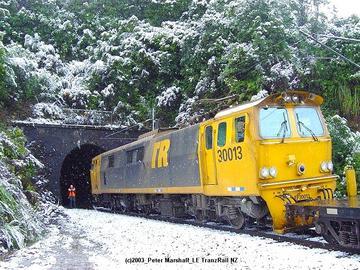
This is a list of railway, road, and waterway tunnels, including hydroelectric intakes and tailraces and gun battery tunnels, in New Zealand. It includes artificial chambers but excludes New Zealand caves and New Zealand mines.

This is a list of railway, road, and waterway tunnels, including hydroelectric intakes and tailraces and gun battery tunnels, in New Zealand. It includes artificial chambers but excludes New Zealand caves and New Zealand mines.
From longest to shortest.



In rural Taranaki, all single lane:
There are 3 other tunnels on tracks in the Taranaki area; Aukopae (closed), Graylings cattle tunnel, Waikawau beach tunnel. [9]
In Wellington: